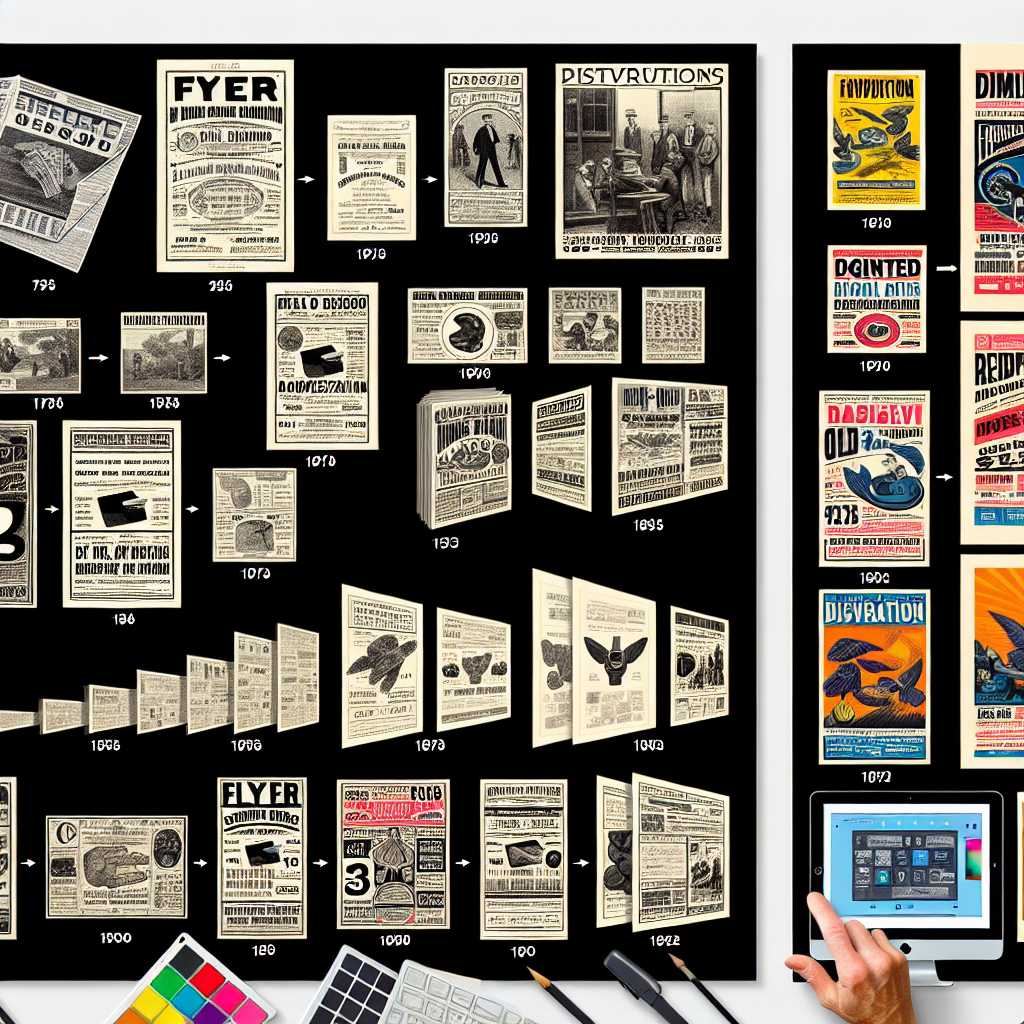The Evolution and Impact of Flyers in Advertising and Communication
Flyers, those ubiquitous pieces of printed paper that advertise events, services, or products, have long been a staple in the world of marketing and communication. The evolution of flyers—from their historic origins to their modern digital transformation—reflects broader changes in technology, design, and cultural engagement. In this detailed account, we examine the enduring legacy of flyers, their significance in various sectors, and contemplate their future in a rapidly evolving digital landscape.
The Historical Significance of Flyers
The use of flyers can be traced back several centuries when they served as an essential medium for the distribution of news and information. From the proclamations of ancient Rome to the pamphleteering of the early 20th century, flyers were a prime method for mass communication before the advent of widespread broadcast media.
In eras marked by political upheaval or social change, such as during the Reformation, the American Revolution, or even the Suffragette Movement, flyers were crucial in spreading ideological beliefs and mobilizing community actions. They were an inexpensive and efficaciously broad-reaching tool for those wanting to share their message with a large audience.
Advertising and the Promotional Flyer
With the rise of consumerism in the 19th and 20th centuries came the proliferation of flyers as an advertising tool. Businesses small and large realized that flyers could effectively attract attention and promote goods and services directly to potential customers. Marketplaces found an ally in the simple flyer for announcing sales, specials, and grand openings, often propelling small-scale operations into larger, more lucrative endeavors.
The explosion of music and entertainment venues in the 20th century also benefited from flyer usage. Promoters would canvas town streets with posters and handbills disseminating information about upcoming performances or club nights. For certain cultural niches like the underground punk movement or rave scenes, where traditional media sometimes failed to reach, flyers became iconic symbols of a cultural identity.
Design Evolution and Printing Techniques
The development of printing technology significantly influenced flyer design through various eras. The early Letterpress machine paved the way for moving typefaces in printing, while subsequent lithography and offset printing brought about a revolution in full-color flyers that caught the eye with artistic aesthetic appeal.
Graphic design evolution has ensured that flyers not merely substantiate information, but do so with artistic flair. Memorable typography, arresting images, and innovative layouts have transformed once-simple notices into collector’s items or examples of specific historic periods.
Flyers in the Digital Age
The advent of digital technology did not herald the end of flyers as one might have expected; instead, it ushered in an era of digital flyers – easily created with professional desktop publishing software or even online with a myriad of design tools at one’s disposal. The digital footprint puts less stress on physical resources and reaches a global audience instantaneously through email blasts or social media shares—thus carving out a nice niche alongside their tangible counterparts.
Digital platforms have democratized flyer creation; now anyone with basic computing skills can craft a message and disperse it to their network. Yet despite this ease of creation, competition for attention online is fierce owing to content saturation—something physical flyers did not struggle with to the same degree.
Challenges and Opportunities
Flyers today encounter significant challenges. Environmental concerns over paper use incentivize a shift towards digitization; however many advocate for environmentally friendly printing solutions like recycled paper or biodegradable inks. Additionally, as some markets become increasingly saturated with both print and digital advertising noise, standing out among the crowd requires more creativity.
Despite these challenges lies a bounty of opportunities: Advances in augmented reality could pave the way for interactive flyer experiences; analytical targeting from collected data could ensure that flyers reach an interested audience more accurately than ever before.
Notes
Image description: A collage depicting the evolution of flyer advertising; ranging from historic black-and-white handbills to colorful modern designs showcasing printed paper stacks alongside representations of digital flyer distributions on electronic devices.
